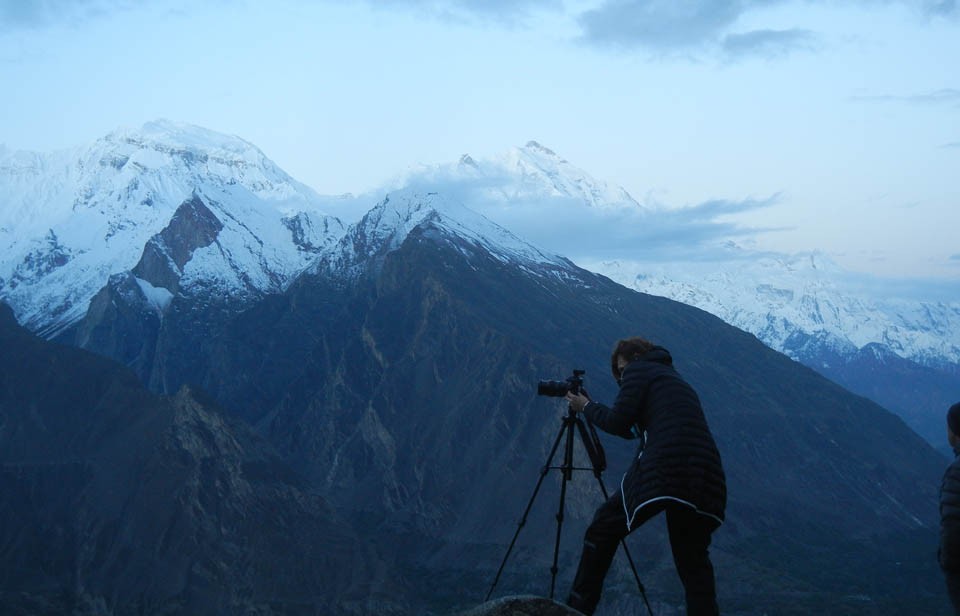
Experiencing the Fairy Meadows in all their natural glory

I had the good fortune to visit Hunza with my friend a few months ago, before the winter had set in. The drive from Dassu to Raikot Bridge (a distance of about 50 kilometres), and onward was fascinating. We observed the confluence of Tangir and Indus Rivers, clearly indicated by the junction of muddy and glaciated water.
At this point, we had to leave our vehicle and hire a local jeep to undertake the arduous drive through the tough and uneven mountainous terrain that only local drivers are masters of. After an hour-long drive of traversing through the sharp curves of the narrow road, we ended up at Thato village where the jeep had to be parked as the track ahead was only suitable for trekking.
From here onward, the Fairy Meadows could be approached only on foot.
The location of this small village opened up views of magnificent towering peaks for us. The locals live simple lives; because the village is largely inaccessible, they grow potatoes and rear sheep which seem to be a result of crossbreeding with Marco Polo sheep, a rare mountainous wild sheep.
There is a station midway en route to Fairy Meadows where we stopped to have desi food in a rustic restaurant before proceeding on the itinerary taking us through coniferous trees and vast meadows.
The striking view of Nanga Parbat is very visible after making the second turn on the track. A series of lofty peaks can also be seen from here.
The journey to the Fairy Meadows is wholesome fun - camping to trekking and staying in wooden huts. We had an overnight stay at Raikot Sarai huts, a refreshing break from brick and mortar structures. These huts are beautiful, earthy wooden structures that have a cozy feel to them, and are perfectly suited to the severe climate. Tents were also available for rent if outdoor overnight stay was desired to experience the Fairy Meadows in all their natural glory.
In this mountain-locked site, there are trees about 400 years old, a lake, and peatlands. The local people use the peat as a source of heating and cooking in winter. This site is also used for freestyle polo matches and livestock grazing. The lush green grassing carpet studded with perennial flowers is simply awesome.
We were told that from this point it takes about two hours to Beyal camp to approach the Nanga Parbat but, unfortunately, we could not attempt this journey due to time constraints. After overnight stay in the serene wilderness, we returned next morning to the Thato Village, and traversing all the way up to our own vehicle to go further to Hunza.
It was night when we reached Hunza where we stayed in Dyker. My friend told me that we need to get up early in the morning to see the sunrise point where the first rays of the sun falling on the glorious Diran, Golden, Sumaya Sur, Rishkpuri peaks.
When we reached the point, we saw some foreigners who had also come to photograph the sunrise in the wee hours of the day. It was a picturesque site where we had morning tea which we had taken in a thermos with us. After spending some time there, we had to go back to the hotel and plan our exploration of Hunza’s natural beauty, culture and heritage.